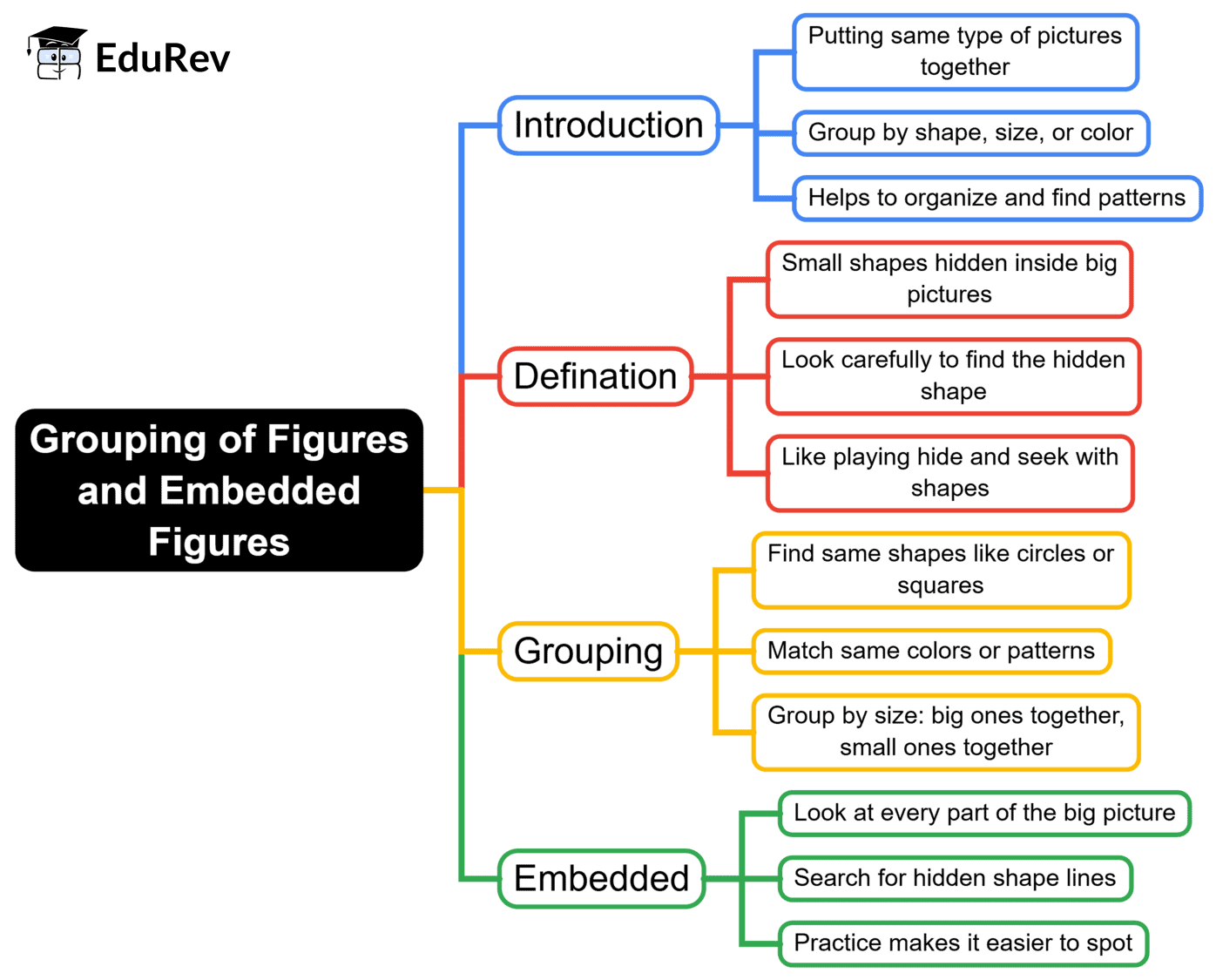Class 2 Exam > Class 2 Notes > Math Olympiad for Class 2 > Mind Map: Grouping of Figures and Embedded Figures
Mind Map: Grouping of Figures and Embedded Figures | Math Olympiad for Class 2 PDF Download

The document Mind Map: Grouping of Figures and Embedded Figures | Math Olympiad for Class 2 is a part of the Class 2 Course Math Olympiad for Class 2.
All you need of Class 2 at this link: Class 2
|
33 videos|87 docs|82 tests
|
FAQs on Mind Map: Grouping of Figures and Embedded Figures - Math Olympiad for Class 2
| 1. What are the different types of figures that are typically included in the grouping of figures? |  |
Ans. The grouping of figures typically includes various shapes such as geometric figures (like triangles, squares, and circles), organic figures (representing natural forms), and abstract figures (which may not have a specific shape but convey a concept). Each type has unique properties and can be categorized based on characteristics such as symmetry, dimension, and complexity.
| 2. How do embedded figures differ from regular figures? |  |
Ans. Embedded figures are shapes that are hidden within a larger figure. Unlike regular figures, which can stand alone and be easily recognized, embedded figures require the observer to identify them within a more complex design. This skill is often used in psychological assessments to evaluate visual perception and cognitive abilities.
| 3. Why is understanding the grouping of figures important for students? |  |
Ans. Understanding the grouping of figures is crucial for students as it enhances their spatial awareness, critical thinking, and problem-solving skills. It also helps in various subjects such as mathematics, art, and science, where recognizing patterns and relationships between shapes is fundamental for grasping complex concepts.
| 4. What methods can be used to teach grouping and embedded figures to children? |  |
Ans. Effective methods for teaching grouping and embedded figures include hands-on activities like puzzles and shape sorting, visual aids such as diagrams and cards, and interactive games that encourage exploration. Additionally, storytelling that incorporates shapes and figures can engage children and help reinforce their learning.
| 5. How can parents support their children in learning about figures and their groupings at home? |  |
Ans. Parents can support their children's learning by providing resources such as books and online games focused on shapes and figures. Engaging in everyday activities like cooking (measuring shapes) or crafting (creating shapes with materials) can also reinforce these concepts. Encouraging children to describe and categorize items around the house based on shape can further enhance their understanding.
Related Searches















